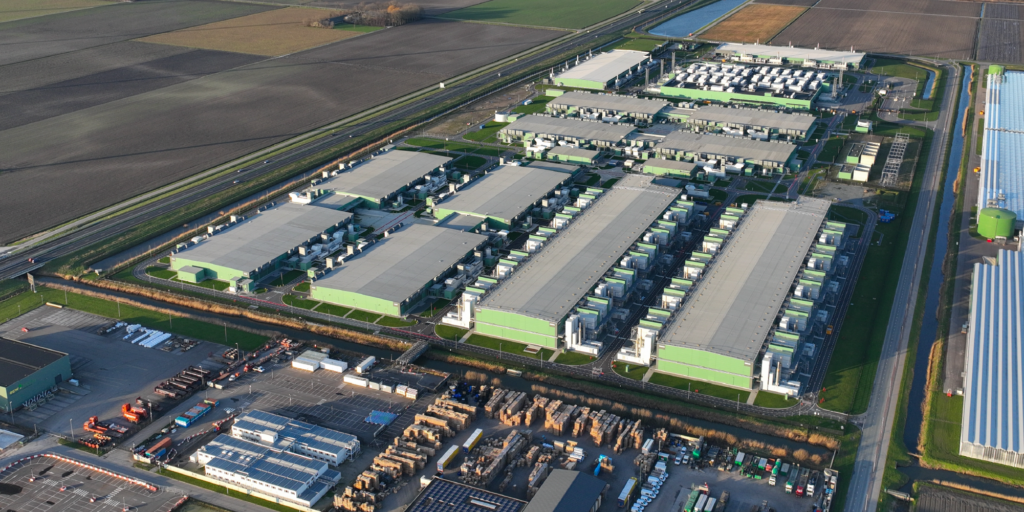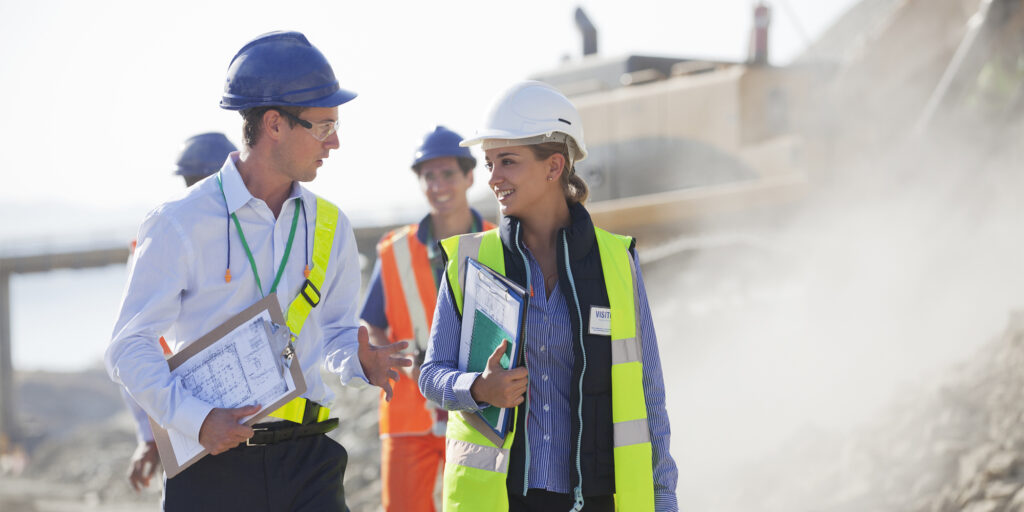— 7 min read
Cutting Delays and Costs: Proven Ways to Boost Construction Site Efficiency
Last Updated Apr 9, 2025
Last Updated Apr 9, 2025

On-site efficiency separates profitable construction projects from those plagued by delays and budget overruns. In Australia’s construction landscape—where supply chain disruptions, skilled labour shortages, and increasingly strict regulations are the norm—even minor inefficiencies can snowball, eating into productivity and eroding profit margins.
This guide explores practical strategies to optimise resource use, address common bottlenecks, and leverage digital tools to improve on-site efficiency on Australian construction projects.
Table of contents
What Is Construction Site Efficiency?
Construction site efficiency is the ability to complete a project on time and within budget while maximising resource productivity and minimising waste. It's achieved through strategic planning, communication, and resource management.
Efficient sites maintain the delicate balance between speed, quality, and cost-effectiveness — ensuring projects remain profitable while meeting required standards.
Benefits of Improved Construction Site Efficiency
Enhancing site efficiency delivers measurable gains that directly support project success:
- Reduce costs through smarter resource use, fewer errors and streamlined workflows
- Accelerate timelines by removing bottlenecks and avoiding trade-to-trade delays
- Boost productivity via clear task allocation, real-time coordination and less idle time
- Improve safety through proactive risk planning and consistent enforcement of protocols
Common Causes of Inefficiencies on Construction Sites
Before improving efficiency, it’s essential to understand what’s getting in the way. These common issues are often at the heart of delays, budget blowouts, and rework.
Disorganised Project Scheduling
Poor scheduling creates costly ripple effects. If the sequence of tasks is poorly planned, trades can't start work on time, forcing contractors to either pay crews for idle time or reschedule at premium rates.
For example, delays in structural framing can hold up electrical and plumbing installations, derailing the entire project timeline. These knock-on effects often lead to disputes over who’s responsible and who should pay.
Poor Communication Between Teams
When teams across different scopes or levels don’t share information, opportunities for improvement get lost—and mistakes increase.
For example, a crew working on floor 25 of a high-rise might struggle with an issue already solved by the crew on floor 5. Without clear communication channels, that knowledge stays siloed, and problems repeat unnecessarily.
Material and Equipment Delays
Late material deliveries stall progress and disrupt the critical path. The problem often lies in a lack of real-time visibility: Construction project managers might not realise there’s a supply issue until materials fail to arrive on site.
These delays force last-minute schedule adjustments and unplanned downtime. Effective supply chain coordination between project managers, suppliers, and site teams is key to keeping things moving.
Manual Processes and Paper-Based Workflows
Paper-based processes can slow everything down. When RFIs, submittals, and change orders rely on physical signatures or in-person approvals, decisions that should take hours can stretch into days—or weeks.
Digital tools eliminate these delays by enabling real-time collaboration and approvals from anywhere, helping teams make faster, more informed decisions.
How to Improve Construction Site Efficiency
Boosting efficiency requires more than quick fixes — it calls for meaningful improvements to core operational practices. The following strategies address common challenges on Australian construction sites, offering practical ways to drive productivity gains.
1. Streamline communication
- Clarify reporting structures so everyone on site knows exactly who to contact with questions or issues.
- Standardise communication protocols across trades to reduce ambiguity and create a more supportive culture on-site.
- Use two-way radios with dedicated trade-specific channels on large or dispersed sites — such as infrastructure or mining projects — to enable instant, location-specific communication.
Pro Tip
Hold daily toolbox talks to reinforce priorities, identify potential site hazards, and align crews on coordination requirements before work begins.
2. Prioritise safety as a productivity driver.
- Model safety leadership on-site by having managers consistently use PPE, address unsafe behaviours in real time, and participate in safety conversations.
- Reframe safety as an enabler, not a barrier, to productivity — reinforcing that well-protected teams are more consistent and effective.
- Adopt digital safety tools to streamline hazard reporting and resolution. Addressing safety issues promptly reduces downtime and keeps teams moving.
3. Invest in workforce development.
- Deliver training beyond basic competencies, focusing on task sequencing, efficient material handling, and tool care to increase daily output.
- Run structured mentorship programs pairing seasoned workers with new hires to accelerate skills development and pass down practical knowledge.
- Offer cross-training opportunities so workers can take on multiple roles. This flexibility helps teams adapt when delays or resourcing gaps emerge.
4. Optimise material logistics.
Pro Tip
Create zone-based staging areas that keep materials within 10–15 metres of their installation point. This dramatically cuts down time spent retrieving materials across large or high-rise sites.
- Implement just-in-time delivery schedules aligned with work plans to minimise storage, reduce handling, and avoid damage.
- Build strong supplier relationships by sharing schedules early and confirming delivery windows at least a week in advance. For critical materials or long-lead items, like structural steel or custom MEP components - order well ahead of typical timeframes and build in delivery buffers.
5. Document everything systematically.
- Standardise site documentation for site diaries, photos, and inspection records so teams spend less time on admin and more time building.
- Implement milestone-based sign-offs to avoid rework. Work shouldn't proceed until the previous stage is documented and verified. This prevents the costly cycle of build-inspect-rework and keeps trades progressing without interruption.
- Log productivity-impacting events — such as weather delays or coordination issues — with photos and brief notes. This real-time record helps teams diagnose and resolve problems faster.
6. Use prequalified Subcontractors.
- Apply formal subcontractor vetting to assess more than just cost — including reliability, past performance, and workforce management.
- Follow established schemes like Queensland's Prequalification (PQC) System, for government work or use internal prequalification processes for private projects.
- Choose subcontractors known for efficient self-management, including punctual crews, full staffing, and proper equipment. These traits reduce site supervision needs and simplify coordination.
How Technology Transforms Construction Site Efficiency
Modern construction technology significantly enhances site efficiency across multiple fronts. By digitising processes and enabling real-time visibility, these tools help Australian builders make faster, smarter decisions that reduce delays and improve outcomes.
Real-Time Project Tracking
Digital tools give site managers real-time visibility into labour productivity, material usage, and overall project progress. This immediate insight enables teams to spot inefficiencies early and make proactive adjustments — before minor issues spiral into costly delays.
Customisable dashboards tailored to each stakeholder’s role promote accountability, ensuring everyone stays focused on the metrics that matter most to their part of the project.On-Site Access to Current Documentation
Site teams equipped with mobile access to current drawings and specifications avoid the delays caused by outdated information. When managers can instantly verify the latest details or specifications directly, work continues without interruption.
Cloud-based platforms accessible from the job site eliminate time lost traveling between the site and office to check documents. This direct access enables quick resolution of discrepancies and prevents crews from working from superseded information, ultimately reducing costly rework.Automated Equipment Monitoring
GPS tracking systems eliminate equipment searching and idle time on large sites. Site managers can locate machinery instantly and reassign underutilised assets to high-demand areas, reducing rental costs and maximising equipment ROI.
Sensor-based monitoring alerts teams to upcoming maintenance needs, preventing unexpected breakdowns that halt productivity mid-shift and disrupt scheduling.Automated Compliance and Safety Management
Digital safety platforms streamline inspections, training verification, and incident reporting — all while automatically capturing the documentation required for compliance. This reduces admin time and helps maintain a strong safety record without slowing down site operations.
Construction site efficiency drives project profitability.
Improving construction site efficiency isn’t just about speeding things up — it’s about working smarter. With strong planning, clear communication, and disciplined resource management, Australian construction teams can reduce costs, improve quality, and elevate safety.
Technology is a key enabler. By increasing transparency and streamlining workflows, digital tools give builders a competitive edge.
The most successful construction companies view efficiency not as a cost-cutting exercise but as a strategic approach that delivers better outcomes for all project stakeholders.
Categories:
Tags:
Written by
Samantha Nemeny
9 articles
Sam—Samantha if she’s feeling particularly academic—has spent a decade in content marketing, with eight years focused on Australia’s construction industry. She has a knack for making complex ideas easy to understand, turning industry jargon into clear, engaging stories. With a background in SEO and marketing, she’s spent the past three years at Procore, helping industry professionals navigate the world of construction with content that’s both insightful and easy to digest.
View profileExplore more helpful resources

Construction Handover: The Keys to a Smooth and Successful Transition
Project handover should be a seamless transition, but its success is determined long before the last walkthrough. When teams consistently align on design, timelines, and quality, and support that alignment...

Why Communication is the Hidden Risk Factor in Construction
Construction is a high-risk industry—not just financially, but physically and reputationally. While significant effort goes into mitigating physical hazards, ensuring financial control, and protecting contractual interests, one of the biggest...

Data Centre Construction: Building the Cloud
As the demand for digital data increases, so does the demand for the physical structures and equipment needed to store and process data. Data centres are facilities that house computer systems...

From Forming to Performing: Mastering Communication for a Winning Construction Culture
The way people communicate on a construction site is like the reinforcing steel in a slab—it holds everything together and strengthens the team. Clear, effective communication is essential for building...